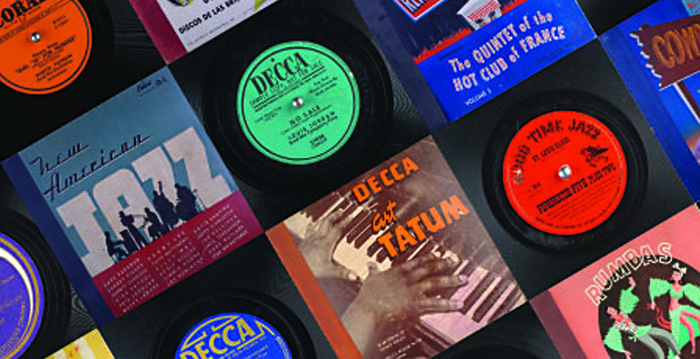The look of Liam: bucket hats and Berghaus on the way back with Oasis | Oasis
[ad_1]
As Oasis fans wait on tenterhooks for tickets for the long-awaited reunion tour to go on sale on Saturday morning, brands are hitching their wagons to what will be a pivotal and lucrative pop culture moment, hoping to cash in on the excitement.
The tour next summer is likely to trigger a wave of merchandise endorsed by the band, experts say, although people wanting to match the Gallagher brothers’ style can probably look beyond official collaborations, given the resurgence of 90s fashion.
New Oasis merchandise is already out. Levi’s has launched a collection of band tees to celebrate 30 years of Definitely Maybe. Luxury streetwear brand Represent Clothing, founded in 2011 by the Mancunian brothers George and Mike Heaton, posted a picture of a collaboration T-shirt with the band.
And there would be plenty more where that came from, said Andrew Groves, a professor of fashion design at the University of Westminster. He said he imagined they had “been ironing out product tie-ins longer than they’ve been sorting out brotherly differences”. He expected “a tidal wave of collaborations”, name-checking brands such as Adidas Spezial, Berghaus and Umbro, as well as two that he wears so regularly that his students have started calling him professor coat: Stone Island, CP Company.
But their look went beyond labels. Often lumped in with mod style, according to Graeme Campbell, a style writer and fan, it was “a little less mapped out than that”. Groves sees Oasis style as “the epitome of anti-art school. While rock stars like David Bowie, Bryan Ferry, Freddie Mercury, and Brian Eno treated their stage outfits like theatrical costumes, Oasis made no such distinction. What they wore on the street, they wore on stage. It’s just as calculated, but it struck a chord with other men who saw themselves being reflected back from the stage.”
The good news for those planning to cosplay as Liam, is that his style, by and large, is easily replicable. Kangol bucket hats, baggy Levi’s and parkas, all are readily available thanks to the resurgence of 90s fashions . Many already seem to be seeking inspiration online. Pinterest has seen increases for searches including “Britpop aesthetic”, “Noel Gallagher 90s” (+20%) and “Liam Gallagher 90s” (who wins this particular battle at +45%).
The secondhand market makes it possible to buy into original pieces – and people are already looking. On Depop, searches for Oasis and Gallagher style items have increased by +863% since the tour was announced. According to a spokesperson for the resale site: “Oasis are set to inspire a return to a 60s-meets-90s casual aesthetic.”
But Campbell, who has written before about Britpop style, adds a note of caution: “Anyone can pick up a surplus parka or military coat, but they can’t wear it with the same ‘no-fucks-given’ attitude as Liam Gallagher does. This is a guy who thought nothing of walking out in front of a quarter of a million people at Knebworth in his girlfriend’s cable knit sweater.”
There will be practical considerations as well. According to Campbell, Oasis gigs are not for the faint of heart. “There are pints of all sorts being thrown about, it’s hot, you stand for hours, and then bounce when the band come on.” Heaton Park, where the band will play in Manchester, “is notorious for becoming a mud bath”, said Groves, a Manchester City season ticket holder. “It’ll be a brave person that wears their latest Adidas Spezials. I expect it will be a sea of bucket hats, Man City shirts, and rose-tinted glasses – literally and metaphorically.” Campbell plans to wear an old pair of trainers that he doesn’t mind getting dirty.
Can we expect to see Britpop-era looks studiously replicated? “The older fans are going to tread carefully – they’re hyper-aware of veering into ‘Dadsual’ or ‘Wellend’ territory,” said Groves, referring to the portmanteau of Paul Weller and bellend. “They’ll keep it subtle.”
after newsletter promotion
Younger fans, who weren’t around to see Britpop unfold first time around, are more likely to double down, according to Groves. “[They] will probably go all-in on the classic looks that made the band iconic: Umbro Cortez drill tops, Berghaus jackets and bucket hats.”
Some high-fashion influences may also be at play. The 24-year-old son of Liam, Lennon Gallagher, who recently starred in a campaign for Burberry, is likely to be in the crowd. Chanel is another luxury label with some claims on the band: when it chose to hold a show in Manchester last year, Noel Gallagher’s daughter, Anaïs, and Lennon were both in attendance. Campbell cites the influence of Britpop on contemporary brands, from Grace Wales Bonner’s collaboration with Adidas to streetwear labels such as Palace. “It will be interesting to see if those nostalgic 90s sensibilities feed into more upcoming collections following the news of the reunion,” he said.
Realistically, the crowd is likely to look quite different to the last time Oasis looked out from a stage, at V festival in 2009. The world had not yet fully succumbed to Swiftism, a cultural phenomenon that has changed what concertgoing looks like. With these gigs being called the “Eras tour for middle-aged men”, will the older crowd find their equivalent of swapping friendship bracelets? It will be interesting to see, but Campbell says he is not sure that would be in keeping with Oasis fans’ style.
[ad_2]
Source link





